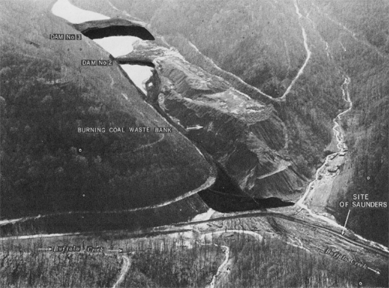|
The 40th anniversary of Buffalo Creek kicked up all kinds of flashbacks.
One of them was a glint of sunlight on a wire, stretched across the valley. I did not see the glint; fortunately, the helicopter pilot did. The official total of dead from the flash flood in Buffalo Creek, West Virginia, on Feb. 26, 1972, was 125, but it almost became higher. The helicopter episode came when somebody in authority offered The New York Times a place on an Army helicopter that was doing reconnaissance in the long narrow valley. As a reporter, you always accept these offers. I had been in helicopters before, but they always had doors and stuff. This one, as I recall, had a chain or belt stretched across a portal. I was strapped into my seat, but my inner core had the sensation of dangling out. It was eerie enough, trying to adjust to pickup trucks lying in creek beds, mobile homes stretched across roadways, lowlands flattened as if by a giant bulldozer, and knots of rescue workers, poking in the flotsam at every bend of the river. Not much was moving. We were heading uphill, where the coal company had placed an earthen dam to catch all the water and junk from the mine. Suddenly, I heard the pilot mutter something as he made an evasive veer, straight up, as I recall. We came to understand that he had spotted an electric or telephone line stretched across the valley. Forty years later, I have no idea how close we came. All I remember is the mixture of gravity and fear in my stomach. Whenever I think of Buffalo Creek, that little episode comes to mind. * * * The pistol adventure happened a few days later, when the Times home office asked me to check for more earthen dams in the region. I caught up with Ken Murray from Tri-Cities, who remains one of the great photographers of Appalachia. Ken and I had met right after the mine blew up at Hyden, Ky., on Dec. 30, 1970. We both went to the first funeral -- the shot man who had been using outdoor explosives indoors, during weather when methane gas is at its most explosive. We became a unit on subsequent assignments, with Ken contributing far more than this city boy ever could. This was when I learned to rely upon all the great photographers I have worked with. Ken and I drove around, looking for likely topography that might harbor an earthen dam. We were halfway up a hillside when the company guards caught up with us, clearly trespassing. I won’t say they were aiming their pistols at us, but they let us see the pistols. Ken and I were well aware that in 1967, the Canadian filmmaker, Hugh O’Connor, had been blown away after walking onto somebody’s property in rural Kentucky while making a documentary. My fellow journalists always told me that story – I think, to get a rise out of me, but they were surely doing me a favor, too. (The only time I ever had a gun actually pointed at me was by a very nervous young trooper wielding a nasty-looking shotgun during a riot in Baton Rouge in that same era. The trooper told me to produce my identification and I talked him through the process of my rummaging around in my pockets, and was he all right with that? I still do that whenever an officer tells me to produce my wallet. Nothing like play-by-play to calm testy officers with weapons.) Anyway, the coal guards interrogated us, until their boss arrived. As it happened , Ken and I knew the man from an earlier story we had done. He shook his head and said he was very disappointed in us. Meanwhile, Ken whispered, “Let’s get down to the state road; that’s public property.” We started putting one foot after another, telling our story walking, until we reached the highway. I told the foreman I had made a terrible mistake and would never get lost like that again, and we drove off. Didn’t find any earthen dams that day. Just guessing they’re still up there, waiting for the next hundred-year-rain in a week or two.
Hansen Alexander
2/26/2012 03:17:52 am
I, for one, am grateful that the helicopter did not get tangled in any telephone wires. Comments are closed.
|
Categories
All
|










